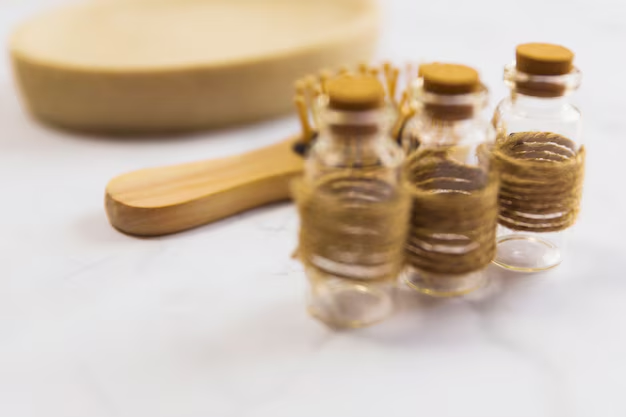How Long Can Your Mustard Beat the Test of Time in the Fridge?
When it comes to condiments, mustard is a staple found in countless kitchens around the world. Whether you're dolloping it onto a sandwich or incorporating it into a tangy dressing, its rich flavor profile adds zest to various dishes. But as you reach for the jar in your refrigerator, a lingering question may arise: How long does mustard last in the refrigerator?
In this comprehensive guide, we'll dive deep into the shelf life of mustard, how to store it properly, and knack for spotting signs of spoilage. We'll also touch upon the versatility of mustard and practical tips on using it effectively in your culinary endeavors. So, let's explore the intriguing world of mustard and its longevity!
Understanding Mustard's Shelf Life
What Factors Influence Mustard's Duration?
Mustard's longevity in your refrigerator depends on several factors such as:
- Type of Mustard: Different mustard types, such as Dijon, yellow, or honey mustard, may have varying shelf lives due to their unique ingredient profiles.
- Packaging: The way mustard is stored—whether in a glass jar or plastic squeeze bottle—can affect its shelf stability.
- Ingredients and Preservatives: Mustard's composition and any added preservatives play a crucial role in determining how long it lasts.
General Shelf Life Guidelines
While mustard typically does not spoil quickly due to its acidic and preservative content, its best quality is maintained when used within specific time frames:
- Unopened Mustard: Unopened mustard generally remains good for up to two years past the printed expiration date, if stored in a cool, dry place.
- Opened Mustard: Once opened and consistently refrigerated, mustard can maintain optimal quality for about 1-2 years.
🗒️ Quick Tips to Extend Mustard's Life:
- Store mustard in a tightly sealed container.
- Keep it consistently refrigerated after opening.
- Avoid cross-contamination by using clean utensils.
How to Properly Store Mustard
Tips for Best Storage Practices
Ensuring mustard remains fresh for as long as possible is essential. Consider these storage tips:
- After Opening: Always refrigerate mustard after breaking the seal to keep it fresh. Refrigeration slows down spoilage and keeps mustard from turning brown.
- Avoid Exposure to Air and Light: Light and air can degrade mustard's flavor and color, so ensure the lid is tightly closed.
- Separate Utensils: Using a separate spoon or knife to serve mustard helps prevent contamination from other foodstuffs.
Container Matters
The packaging of mustard can impact its longevity:
- Plastic Bottles: These are lightweight and less breakable, making them convenient but potentially less airtight over time.
- Glass Jars: Though heavier, glass jars are more impermeable to air, preserving mustard's freshness longer.
Both packaging options are adequate; the key is ensuring they're stored in a cool, dark place.
Recognizing Signs of Spoilage
Is Your Mustard Still Safe to Eat?
Mustard is generally safe and long-lasting, but like any food product, it can spoil. Watch out for these signs:
- Off Smell: An unusual or sour odor can signal that the mustard has gone bad.
- Color Changes: If the mustard has darkened or developed an unusual hue, it may be past its prime.
- Texture Alteration: If the mustard becomes watery or lumpy, it could indicate spoilage.
- Unwanted Growth: The presence of mold or unusual growth inside the container is a definite sign to discard it.
🔍 Spoilage Summary Checklist:
- Mustard smells unusual or overly pungent.
- Color appears darker or has a discoloration.
- Texture is uneven or watery.
- Visible mold or unusual appearances are inside the jar.
Making the Most of Mustard
Culinary Uses of Mustard
While primarily used as a condiment, mustard's versatility extends beyond. Here are a few imaginative ways to utilize mustard:
- Marinades and Dressings: Mix mustard with vinegar and olive oil for a zesty marinade or salad dressing.
- Cooking Sauce: Add mustard to sauces for meats or stir-fries to elevate the flavor.
- Flavor Booster: Use mustard as a secret ingredient in mashed potatoes or grilled vegetables for an extra kick.
Prolonging Mustard's Usefulness
Here are some ideas to ensure you maximize your mustard consumption before its quality diminishes:
- Portion Out Mustard into Small Containers: This reduces repeated exposure to air.
- Experiment with Different Recipes: Incorporating mustard in diverse cooking applications can help use up the product faster.
- Conduct the Smell Test: Regularly smell and taste test your mustard for freshness.
💡 Creative Mustard Usage Tips:
- Blend mustard into a cheese sauce for added tang.
- Enhance egg-based dishes by adding a teaspoon of mustard.
- Use mustard as a glaze for roasted poultry or pork.
Wrapping Up: Mustard's Enduring Legacy
Mustard stands out as an incredibly versatile and enduring condiment. With proper storage and mindful usage, it's unlikely to pose a quick expiry challenge in your refrigerator. Keeping your mustard consistently refrigerated after opening and recognizing signs of spoilage will ensure it remains a flavorful addition to your kitchen.
To make the most of mustard and its remarkable shelf life, keep these practical tips and storage guidelines in mind. Whether you prefer it as a sandwich spread or a secret ingredient in your savory dishes, mustard is sure to enhance your culinary creations for a long time to come. Enjoy the delightful tang and zest that this versatile condiment has to offer!
